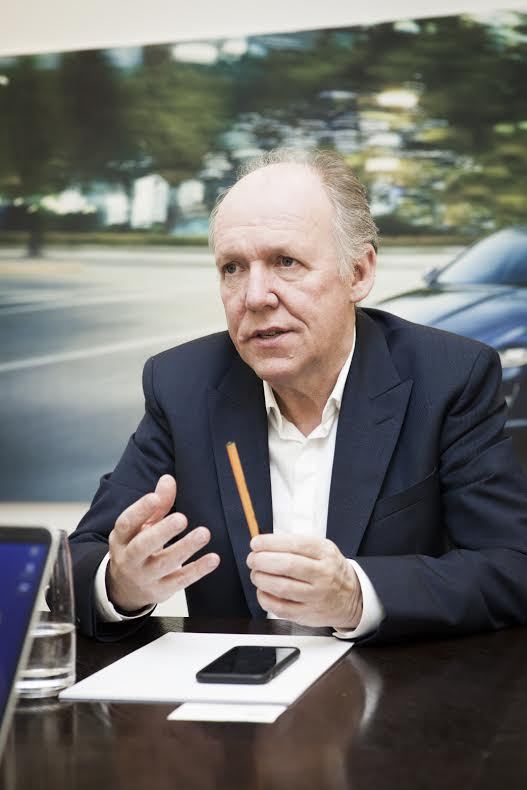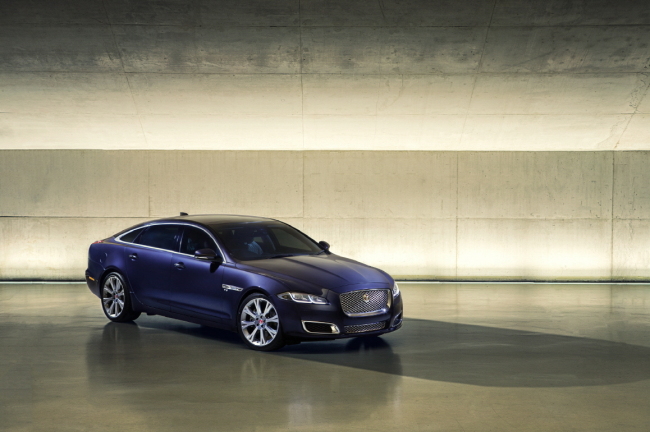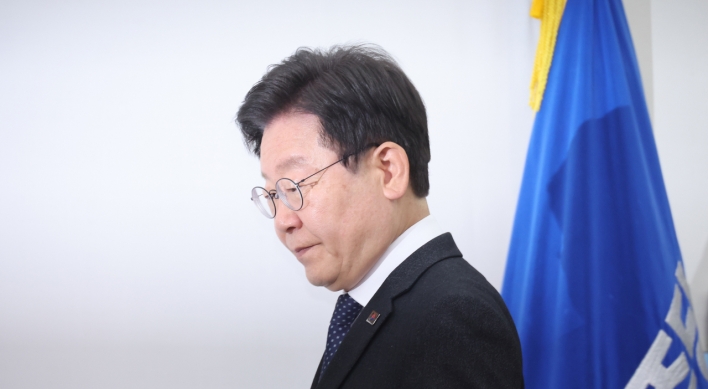The world of 84-year-old British luxury carmaker Jaguar keeps changing.
The one-time maker of archetypical sleek but masculine classic sports cars is now behind one of the trendiest and fashionable sports sedans under the direction of the master designer Ian Callum.
The Scotsman on Monday said that keeping afloat in the changes and trends is essential.
The one-time maker of archetypical sleek but masculine classic sports cars is now behind one of the trendiest and fashionable sports sedans under the direction of the master designer Ian Callum.
The Scotsman on Monday said that keeping afloat in the changes and trends is essential.

“You have to move,” Callum said at the launching event of the new, eighth-generation Jaguar XJ held on the day at the Dongdaemun Design Plaza in downtown Seoul. “If you don’t move, you get lost,” he said.
He said that the original Jaguar XJ, launched in 1968, was the first Jaguar with four headlamps. This caused sensation and became the Jaguar design icon until very recently when the lamps were replaced by LED headlamps.
“People used to say, ‘That can’t be a real Jaguar because it (doesn’t have) four headlamps.’ … All I ask in design is: Is it different enough to be a Jaguar? Others will copy this in the future,” he said.
The 61-year-old designer’s latest move is studying future cars.
While many carmakers have found stringent regulations a hurdle for their future businesses, Callum says Jaguar embraces it as an opportunity to move forward.
“What we are doing is we are investigating the alternatives to create pollution free cars (as the U.S. government is seeking to impose on carmakers in the near future),” he told the Korea Herald on the same day.
Technology-wise using recycled aluminum for 50-75 percent of the bodies saves energy, thus meeting the requirements.

Design-wise, the signature aerodynamic design brought down the aerodynamic drag constant to a dramatic level. “A CD factor of 0.3 was very good about 10-15 years ago but now we are at 0.23, 0.22 and almost getting to 0.2. The CD factor has a bearing on emissions,” he said.
But perhaps what catches Callum’s attention the most is the electric vehicle.
Jaguar has been studying the potential of EVs through Formula E racecars. The company has also delved into the possibility of launching commercial cars through the CX75, a hybrid electric, 2-seat, concept car introduced in 2010, which Callum describes as a means to “learn a lot about electric power and hybrid power.”
Callum said EVs would be much freer entities to design.
“There was much more freedom underneath the skin than we’ve had.
“The lack of mechanical connection makes a big difference ― EVs are much more dedicated to themselves and everything is joined with wire so it gives us more freedom. It is something that I am looking forward to getting involved with, designing cars that are entirely not combustion engines from the packaging point of view,” he said.
“The packaging will give more scope in design. You don’t have that huge front because you don’t that the engine there anymore, but just a small one sitting between the wheels. The cars get smaller and get more room inside,” he said.
By Bae Ji-sook (baejisook@heraldcorp.com)
-
Articles by Korea Herald





![[Herald Interview] 'Amid aging population, Korea to invite more young professionals from overseas'](http://res.heraldm.com/phpwas/restmb_idxmake.php?idx=644&simg=/content/image/2024/04/24/20240424050844_0.jpg&u=20240424200058)












![[KH Explains] Korean shipbuilding stocks rally: Real growth or bubble?](http://res.heraldm.com/phpwas/restmb_idxmake.php?idx=652&simg=/content/image/2024/04/25/20240425050656_0.jpg&u=)

